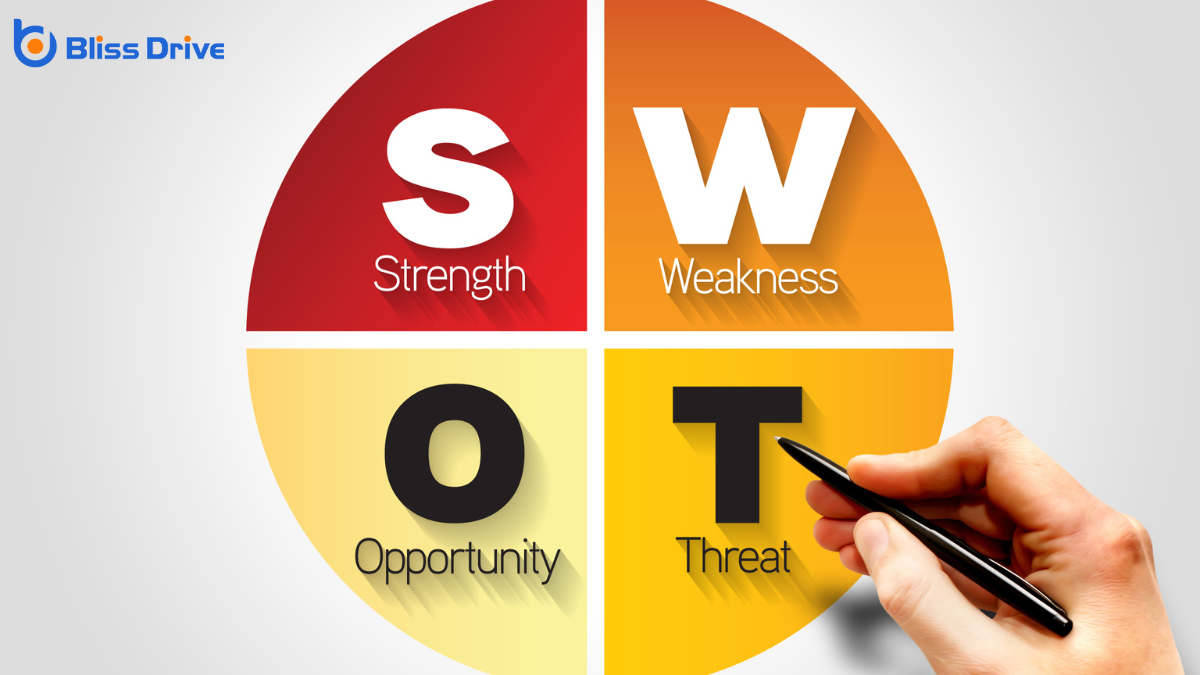Learn More About Us

When we explore a SWOT analysis for competitors, we're diving into a strategic assessment tool that evaluates the strengths, weaknesses, opportunities, and threats of rival businesses. This approach helps us understand competitors' positioning and potential vulnerabilities in the market. By uncovering these insights, we can make informed strategic decisions and find ways to differentiate ourselves. Curious about how this analysis can elevate our competitive edge? Let's uncover the details together.
SWOT analysis is a fundamental tool that helps us evaluate a company's strengths, weaknesses, opportunities, and threats. By understanding these elements, we can gain insights into where a company excels and where it might face challenges.
Strengths and weaknesses are internal factors; they encompass the resources and capabilities that an organization can control. Opportunities and threats, on the other hand, are external factors influenced by the market environment.
When we conduct a SWOT analysis, we’re fundamentally creating a strategic snapshot of a company's current position. This allows us to make informed decisions based on realistic assessments.
It’s vital to be objective and honest during this process to truly understand the dynamics at play. With this understanding, we can better anticipate potential changes and adapt strategies accordingly.
To identify our competitors' strengths, let's first analyze their market position to see how they stand in the industry.
We'll also need to evaluate their brand reputation by considering customer loyaltyThe likelihood of customers to continue purchasing from a brand over time. and public perception.
Understanding a competitor's market position is essential for identifying their strengths and gaining a competitive edge. By evaluating how they stand in the market, we can pinpoint what makes them formidable and what we might learn from them.
Let's focus on key areas:
When we evaluate a competitor's brand reputation, we gain insights into their strengths that mightn't be immediately obvious.
A strong reputation can indicate customer loyalty, consistent quality, and effective communication strategies.
We should look at reviews, social media presence, and industry awards to see how a brand is perceived.
These elements help us understand what sets them apart in the marketplace.

While evaluating our competitors, one of the most essential steps is identifying their weaknesses.
By focusing on their vulnerabilities, we can better tailor our strategies to gain a competitive edge.
Weaknesses can be found in various areas, and recognizing them requires a keen eye and analytical mindset.
Here's what we should look for:
Let's explore how we can identify market gaps that competitors might exploit for growth.
By staying ahead of emerging trends, we position ourselves to leverage these changes before others do.
Additionally, considering strategic partnerships can open doors to new opportunities and strengthen our market presence.
Identifying market gaps is essential for any competitor aiming to gain an edge in the industry.
We’ve got to look where others aren’t, spotting those golden opportunities that others might overlook. It’s all about understanding what’s missing in the market and how we can fill that void.
Here’s how we can start identifying those gaps:
How can we take advantage of emerging trends to outpace our competitors? First, we must stay informed about industry shifts. By monitoring technological advancements, consumer behaviors, and regulatory changes, we can identify trends early. This awareness allows us to adapt quickly, offering innovative solutions that meet evolving needs before our competitors do.
Next, let's leverage data analyticsThe systematic computational analysis of data or statistics to gain insights and support decision-ma.... By analyzing market data, we can predict trends and align our strategies accordingly. This proactive approach gives us a competitive edge.
Additionally, we should focus on building a flexible business model. Flexibility enables us to pivot swiftly when trends change, ensuring our offerings remain relevant.
Ultimately, embracing emerging trends means staying ahead of the curve and positioning ourselves as industry leaders.
While exploring opportunities to outmaneuver competitors, forming strategic partnerships becomes essential. By aligning with the right partners, we can access new avenues for growth and innovation.
Strategic alliances allow us to pool resources, share risks, and reach broader markets. It's vital to evaluate potential partners based on their strengths and how they complement our goals.
Understanding these opportunities can greatly impact our strategic positioning.
Understanding the threats faced by competitors is essential for maintaining a competitive edge in any industry. We need to be vigilant about what's impacting their operations, as it can indirectly affect us.
For instance, technological advancements could threaten a competitor who struggles to innovate, giving us an opportunity to capitalize on their lag. Similarly, changes in regulations might impose additional burdens on them, providing us insights into potential challenges we may face.
We shouldn't overlook market dynamics like new entrants or substitute products that could weaken a competitor's position. By staying informed about these threats, we can anticipate shifts in the industry landscape and adjust our strategies accordingly.
Our awareness of competitors' vulnerabilities helps us fortify our position and stay ahead in the market.

Recognizing the threats our competitors face allows us to harness SWOT insights effectively in our strategic planning.
By understanding these factors, we can tailor our strategies to capitalize on opportunities and strengthen our position in the market.
Let's explore how we can implement these insights.
In conducting a SWOT analysis of our competitors, we gain valuable insights into their strengths and weaknesses, as well as the opportunities and threats they face. By understanding these dynamics, we can refine our strategies to differentiate ourselves and capitalize on market opportunities. Let's use these insights to bolster our strengths and address our weaknesses, ensuring we stay ahead in the marketplace. Together, we can turn this knowledge into actionable strategies for continued success.
